Throwback Thursday: 1977
Posted by FlagsNZ,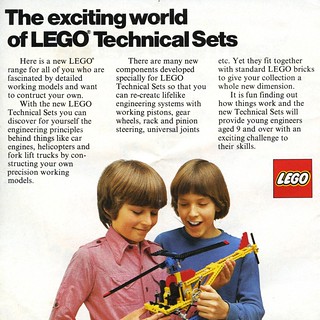
We are at the cusp of the 40th anniversary of the revolutionary LEGO Technic theme. All of the 2017 Technic sets include a printed 3M Technic Beam celebrating this milestone.
In this Throwback Thursday article, I am going to look at the 1977 release of those pioneering LEGO Technical sets, as they were called then.
Read on to see how these sets were designed to have fun while finding out how things worked.
When I grew up in the 1970s I owned a very small LEGO Digger. We had a LEGO compatible toy that was made in New Zealand called Torro. It was inferior to LEGO and was made of softer plastic but, in those days, New Zealand had a prohibitive sales tax regime and LEGO was an expensive luxury.
My father, who worked as Chief Officer in the NZ Government research vessel GRV Tangaroa, sailed to Norfolk Island; an island that is famous for being the final destination of some of the mutineers from HMS Bounty and also where LEGO is reported as being the cheapest in the world.
While the two LEGO Technical sets I received were from the 1978 release, I can remember drooling over 852 Helicopter and 853 Car Chassis which were available for several years. I definitely made MOCs of these two sets using the images found on their boxes as inspiration. As a 12 year old boy, these two sets transformed my LEGO experience for-ever.
I have taken some images from the 1978 Technical flyer which is available from the Brickset catalogue archive. I am focusing on those sets released in 1977.
In the early 1970s, LEGO created the Duplo range to cater to the youngest builders. The Technical sets were developed to provided young engineers aged nine and over with an exciting challenge to their skills.
850 Fork-Lift Truck
The first Technical set was a little yellow Fork-Lift Truck. It has a simple rack and pinion system that raises the mast and a basic steering system. All the early Technical sets used the 2x2 turntable plate for the steering pivots.
There is a non-functional lever on each side of the seat.
LEGO instructions were once printed on a single sheet of paper and were usually folded up like a concertina book.
Each Technical set had instructions printed on two sheets of paper measuring 40 x 54 cm (15.7 x 21.3 inch). All the sets had the main model printed on the two sides of one sheet.
For all the sets, the second sheet had the instructions for alternate models and also had a blueprint style graphic printed at a scale of 1:1.
This set had instructions for two alternate models: a grader and a vertical lift platform.
The building techniques were simpler and there was a smaller range of parts to choose from. The models were assembled with fewer building steps than is found in today's Technic set instructions.
I apologise for the state of the box; it is forty years old.
The boxes were lined with expanded polystyrene and had a clear plastic sorting tray (missing).
851 Tractor
The next Technical set in the series was the red Tractor. This looks like it could easily be mistaken for a modern Creator Expert set.
The lever on the driver's right-hand side lowers the farm implement down to the ground.
The tractor has a six-blade lawn mower which is driven from the right-hand wheel. The lawn-mower blades wizz around at a ratio of 9:1 as the tractor drives around. A universal joint is used for the improved rack-and-pinion steering.
The rear light uses a technique that would be called an illegal connection today.
Two 6M axles can be removed which disconnects the mower. There are alternate farm implements that can be connected here.
852 Helicopter
One of the nicest models of the early Technical releases is the Helicopter.
The hand wheel on the side drives the two rotors. The pilots each have a collective control which changes the pitch of the propeller through a series of linkages. The swashplate is made with the blue and yellow 2x4 Technical plates.
The revolutionary construction opportunities are clearly demonstrated in this model's air frame. There are several rigid, triangular frames that make up the fuselage and tail. SNOT building techniques started here first.
The Technical beams are the first parts in the LEGO System to have hollow studs; the jumper plate did not appear until 1978.
852 Helicopter utilises this feature for first time in any LEGO model by placing the yellow 1x2 Technic brick out by half a stud.
The 870 Technical 4.5V motor has been added to the helicopter. I have often motorised this set during public LEGO displays; people like seeing those large rotors swishing around.
The instruction sheets:
The alternate model is an airplane.
This is an article from the Technic designer's blog about the history of helicopters.
853 Car Chassis
The Car Chassis is the Flagship of the Technical sets and, arguably, the Flagship for the entire theme. This set, more than any of the others, identifies the 1977 Technic release.
At over half a metre long (over 20 inches), this model was for a long time the longest in the LEGO inventory.
853 Car Chassis has a straight four engine. The crankshaft is made up using the 24-tooth gears. These first 24-tooth gears could have an off-centred axle; however, the gears were weak and, if too much torque was applied, the centre would shear off. The engine has a 40-tooth flywheel.
853 Car Chassis has a two-speed gear box.
There is a very satisfying sound when this model is pushed along in first gear. First gear ratio is 9:1 and the pistons really buzz along when the car moves along. This sound and look has not been matched to the same extent in any other Technic car engine.
There were a few faults with this model.
- The glaring omission was the lack of a differential: the rear wheels would skid during any cornering.
- The steering enabled the front wheels to rub against the chassis at full steering lock.
- The sliding seat mechanism falls off easily, and
- Due to its length, the chassis flexes quite a bit.
If I could specify one modern part that would improve these sets it would be the black friction pin; I have a second 853 Car Chassis made with these modern pins and the chassis is so-much more rigid.
This is another early set that I have frequently had motorised at public LEGO shows. This car always draws mostly 40+ year old men who reminisce about their childhoods as they look at this model.
Here is a Technic blog on the History of LEGO Technic Super Cars.
The Box (in much better condition):
Here is the sorting tray.
The instruction sheets:
The alternate model is a small racing car.
Parts
There are some distinctive parts that were released with this new range of models.
The solid large 24x43 and small 17x43 tyres replicated the knobbly tyres found in the Town sets.
To enable the Technical features to function, beams had holes for axles and pins.
The 1977 release had 16, 8, 4 and 2 x1 bricks with holes, with 8 and 4 x2 plates with holes.
In this Technic blog, The Beginning, there is an interview with Jan Ryaa, one of the founding fathers of Technic back in the 1970s, where he worked with another designer, Erik Bach. Jan Ryaa describes how slowly but surely, they began to build with these new elements.
The gears are the parts that give the technical sets their functions. In 1977, there was an eight-tooth, 24-tooth, and 40-tooth gears, with a 24-tooth bevel gear. The 24-tooth gears also act as the crank shaft, and who can forget the square pistons.
There was a large steering wheel, the rack, universal joint and three connectors.
That was the limit of Technic parts in the first year.
870 Technical Motor, 4.5V and 871 Supplementary Set
As shown previously, a small 4.5V Technical motor was provided as an accessory. For many years. Supplementary Sets were available to augment your parts list.
40 Years
So there you have it: 40 years of LEGO Technic. The celebration 3M Beam uses the modern version of the 24-tooth gear rather than the original 24-tooth version. Also, since there is still a 40-tooth gear used in modern sets, an opportunity to celebrate 40 years with 40 teeth has been missed.
Despite that, I am looking forward to seeing what Technic sets will be released in the second half of 2017. I am hoping that there will be some modern updates of these original Technical sets.
39 likes
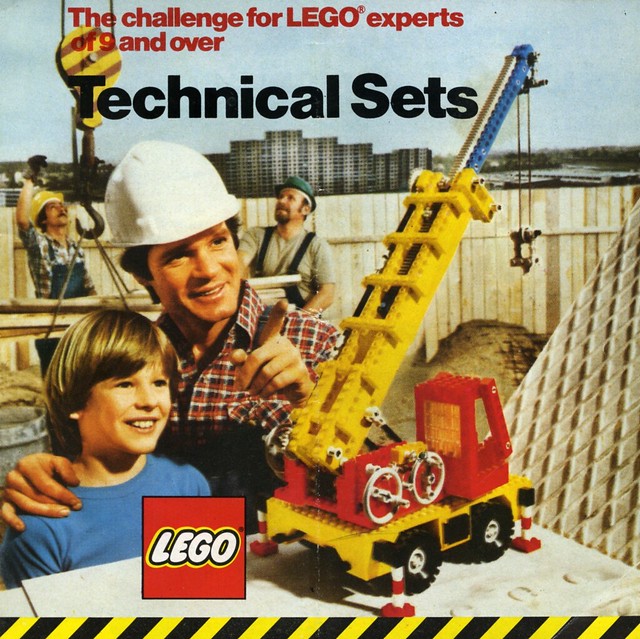
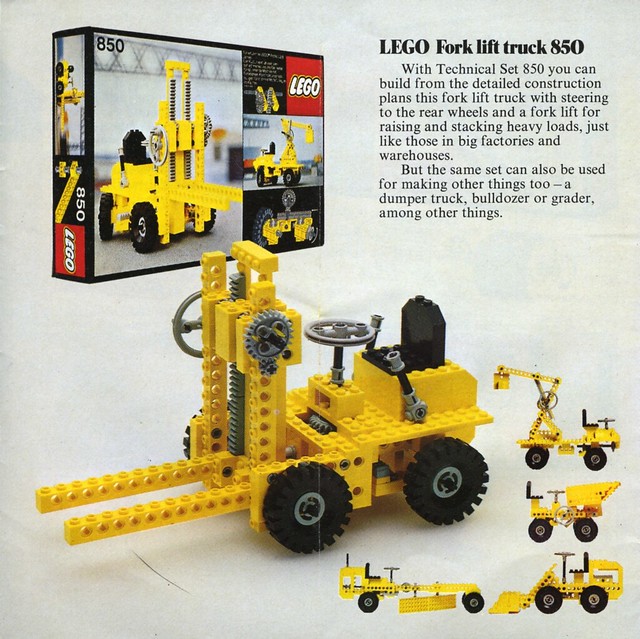




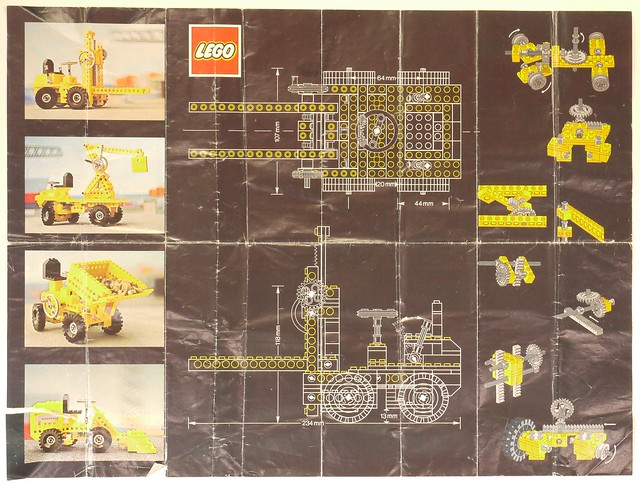



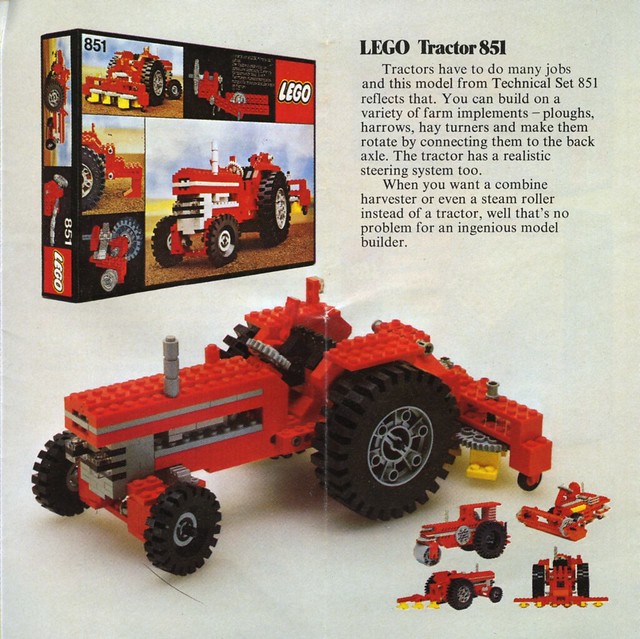
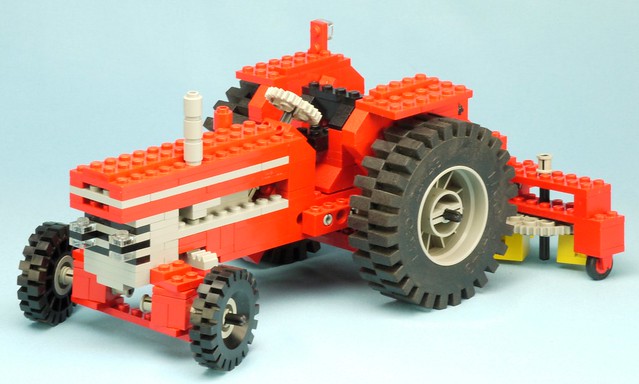




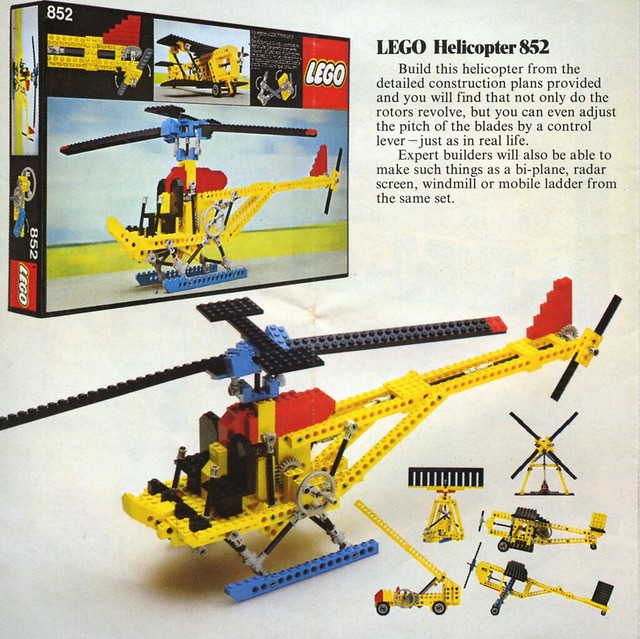

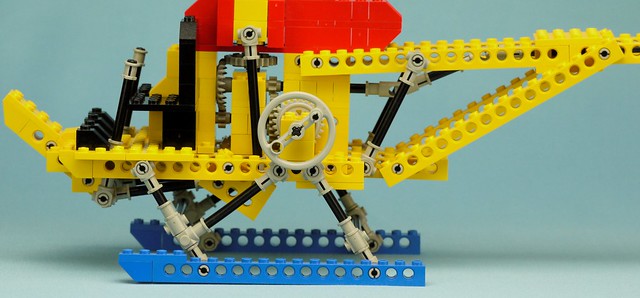



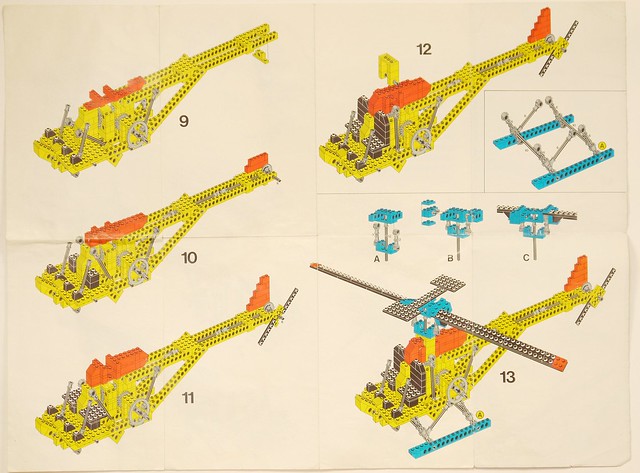



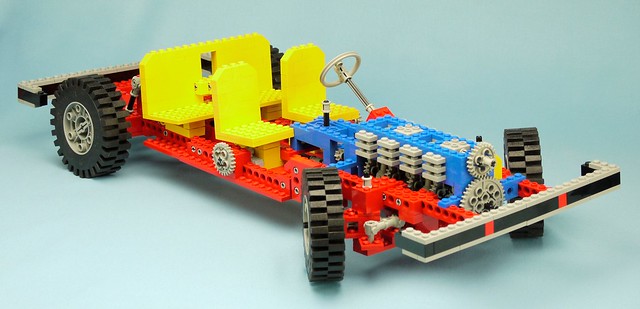

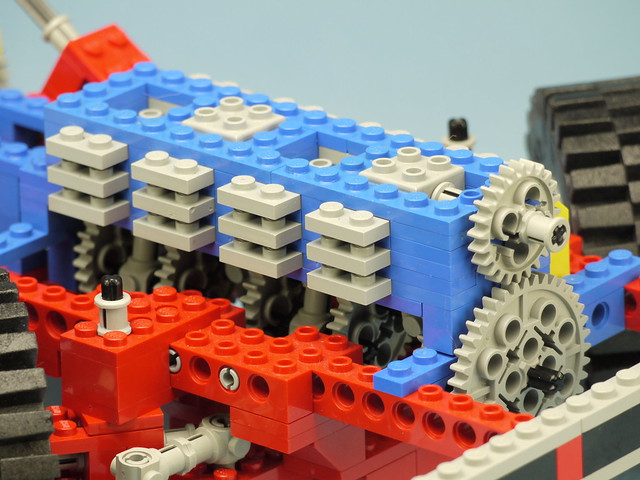
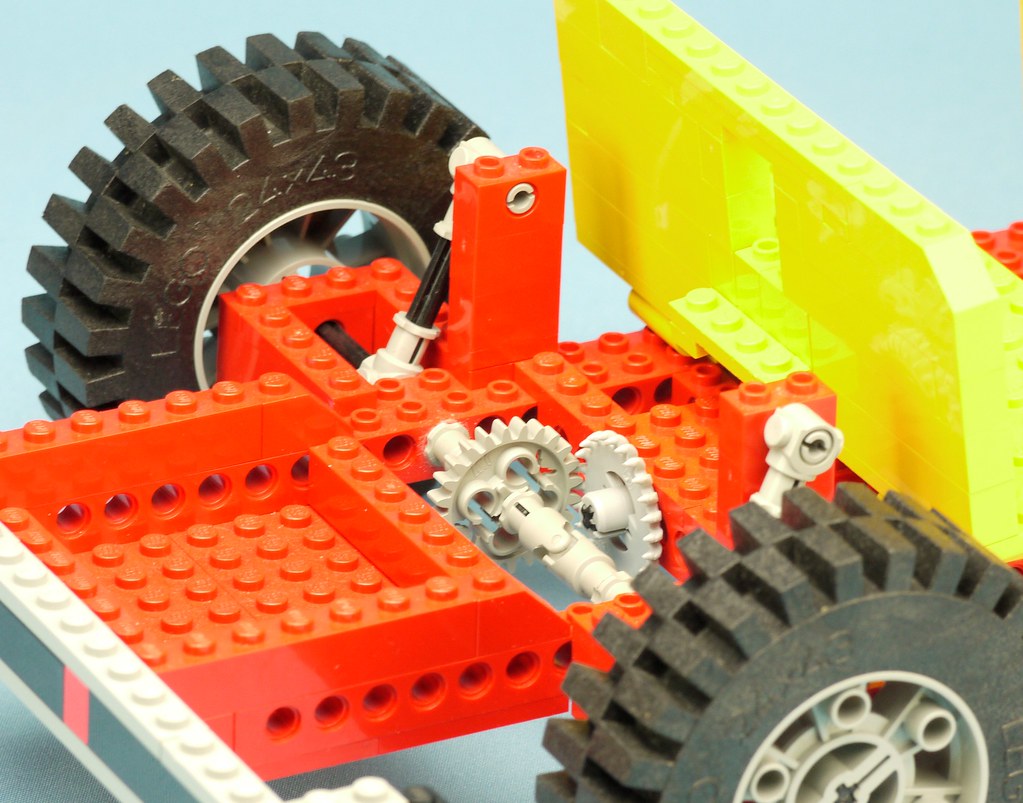




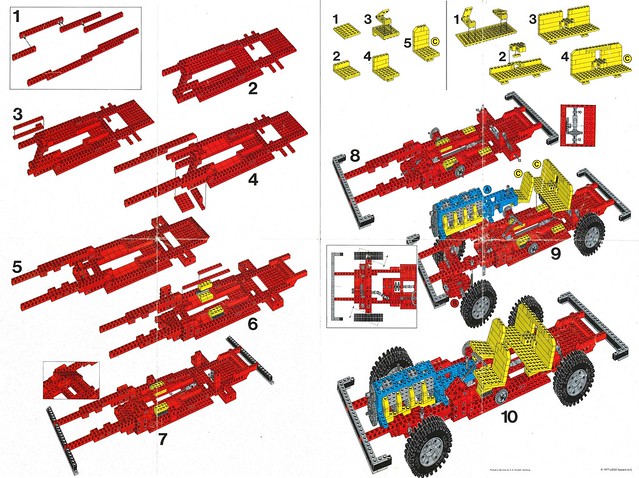







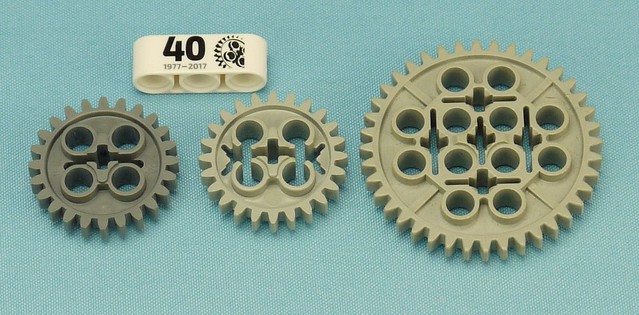
24 comments on this article
Nice article about the origins of Technic, or Expert Builder as we called it in the US. I had the US version of the Forklift, and there was a booklet that came with it that would show how different sets in the range could be combined to create rather large creations - a bridge or a large car, and would give building techniques on how to do so. I remember spending so much time staring at the tattered pamphlet and just being amazed at what could be created. I loved how this and the alternate models that were always pictured on the back of the boxes could help spur the imagination!
I also still remember being a 4 or 5 year old and having a dream that the 948 Go-Kart was sitting on the kitchen table, then waking up, running to the table and realizing it was all a dream...
Really nice article.
I never got hooked on the Technic when i was younger though i do like the functionality the pieces brought and the fact that they are now part of the "classic" range of Lego sets to add some play-ability.
I think my main problem was that the first designs (in my youngster 80/90's era) left too many holes and open spaces when the regular Lego are more "closed" and seem more "finished/complete".
^ My thoughts, exactly. The gaps between panels in Technic sets just bug me! Worst offender recently was the Porsche 911 - to my eyes it looks like it's been in a rather nasty accident. And yet I can't help but admire things like the Bucket Wheel Excavator and other big "functional" sets. Perhaps it's my civil and structural engineering mentality that makes me less resistant to the construction-type vehicles!
Interesting to see how it's developed over the years though, both in terms of the range of parts and the complexity of the designs, while still retaining its fundamental "Technicness". Nice article, Mister Flags!
Really nice and interesting article ! I hope in the seconf half of 2017 a big flagship Technic set to celebrate the 40 years of this theme and to celebrate my 40 years old :-)
Thanks for taking me back to Xmas 1977 where I was excited to receive the forklift. The tractor arrived at some point in 78, either birthday or Xmas.
Despite much pleading I never did get my hands on the car chassis or its successor, I do remember helping a school friend build his rather than doing the maths revision we were supposed to be doing.
Technic beams with studs on. What happy days those were! I wonder if a pleasant anniversary project could be to reengineer some modern Technic sets using original building techniques and parts.
A super end-of-the-year article, thanks.
@FlagsNZ, thank you for your great article about the beginning of LEGO Technic. Stunning to see the limited assortment of elements this theme started with. You just missed the axles. If I remember correctly in the beginning they all were black and came in even numbers: 2, 4, 6, 8, 10 and 12. But I don't know if they started with all these lengths back in 1977? As kid (and still as AFOL) I can identify the length only by looking at them.
Thanks for mentioning the illegal and offset building techniques found in official sets.
I wonder what kind if MOCs AFOLs today would come up if they only are allowed to use the Technic elements (plus regular plates and bricks) from 1977?
Again, great article. Thanks for sharing.
What a great article. I had the car chassis, tractor and forklift and always wanted the helicopter too. The thing that strikes me most is the complexity of the instructions - two sheets to build the whole car chassis! I'm sure that would be broken down into a 100 page booklet these days.
Lovely stuff.
It can't have been when they first came out, as I was only 6 in '77 and my brother 4, plus we have booklets rather than folded instructions, but it wasn't long before we had the fork-lift, go-kart and tractor. I added the dune buggy a bit later on, but that was it for technic until I came back into the light last year to find parts spread liberally across just about every other theme.
Not built a modern set with panels yet, but edging closer...
Nice articel. I had in my childhood 3 of the first models. Missing the Chopter.
But i bought it last year.
Superb article, I can remember it as if it was yesterday. I got the 852 that Christmas as the 853 had sold out. The presentation was so much better, with all the parts laid out behind the transparent lid. Happy days
@HoMa Yes - 2, 4, 6, 8, 10, and 12 were all available and black only. The 2 axle did not have a notch like they do today.
Oh man, that car chasis. I'd sit and stare at those pictures for hours. My 948 Go Kart seemed like child's play to that set.
We have video of me opening 948 on Christmas morning. Still one of my fondest memories.
I'm glad that I have brought back fond memories to you all.
@HoMa and lippidp, yes, the axles were black and even numbers: 2, 4, 6, 8, 10, and 12. Technic was based on even sized parts; today, nearly all Technic parts are based on odd dimensions.
By 1978, the book form of instructions were showing how two sets could be combined to make a bigger model. 852 and 853 combined to make a station wagon or estate car. I think using two sets in this way was also a first for LEGO.
I cannot stress enough how much I love these Throwback Thursday articles.
In some way those old-school technic sets were much more creative than new ones. Now there are thousands of new piece types designed specifically for one or two sets. Plus, the idea of those Technic sets was to give you the oportunity to build 4 or 5 diferent things and make your brain works.
Sorry, im one of those lined to the idea that less is more and nowadays Lego uses to easily the asset of build new and specific pieces instead of give it another try using the standards.
Oh yes... Had the forklift, helicopter and tractor, the first two with the blueprint sheets. Given the parts I could probably still build the forklift from memory. They were great sets. The helicopter especially was such a genius demonstration of how much you could do with the limited parts selection.
Thank you for this superb Throwback Thursday article. Brings back kind memories when I spent my time with drooling over the LEGO catalogues. I never received any of these sets as a child but now I have the 853 (to complete my LEGO supercar collection), the beautiful 851 tractor (reminds me of Massey Ferguson 135) and the ingenious 852. I like the helicopter the most from the original assortment because authentic collective pitch control is a true miracle from that time.
Lovely article!
I never had any Technic sets as a child; this was back in the late 80's/early 90's, and I was too obsessed with Pirates! However, my older brother did, so I did play around with them from time to time. I used to love finding uses for that little motor!
I think the old sets had so much more charm about them, as they seemed so much more like regular LEGO with the studded bricks rather than the specialist pieces the system uses now. While I understand the introduction of the studless beams and bars, as well as the shaped panels etc., I really don't enjoy building modern Technic sets at all.
I also liked the fact that you could actually SEE the working parts in earlier sets, which seemed to be the whole point to me, something else which is sorely lacking these days.
All in all, an explanation of why I just can't get into modern Technic. Sad times!
Nice article. I was one of the first LEGO technic buyers. I got the tractor 851 in September 1977. The first whatever number (10 ?) of buyers, per toy store, could participate in a draw to win a trip to LEGOLAND Denmark. I did not win that, but I won the LEGO 396 western train. I still have the letter. This year 39 years later I got the car chassis 853.
For the 40th anniversary I was hoping for an updated 853 car. New style engine, new style transmission, differential, suspension and some of the options that came on later cars like pop-up lights, but all in the same color and still a lots of studded bricks.
Thanks so much for this lovely article! We're big fans of old-school Technic in this house, and we were happy to see 850 as it's one of the sets my partner has - it would've belonged to one of his older brothers originally, as he was only born in 1975. We much prefer the studded beams/framework-style Technic models where you can see the mechanisms, but I am curious about what else might be in store for the 40th anniversary this year. It would be interesting to see a classic model from the early days reinterpreted in the modern style...
i log onto this site just for throwback thursday! 850 forklift my very first technic lego
Hi Louis, welcome in the club!
I also signed some minutes ago because of the throwback. So 852 was my first Technic Set. My brother had the other three which I bought from him some time later :). So 852 was really a highlight here, especially the rotors could be tilted which was repeated only some time later with 9396 in 2012. The whole heli resembled the view of one very well. So I really love these early Technic sets. The only problem I had already in these early days was with the missing worm gear especially noticable with the bulldozer 856 from 1979. Also for the tractor the mechanism for holding up the farm implements was quite fragile. Anyway, together with technic book from 1978 http://www.bricklink.com/v2/catalog/catalogitem.page?B=b78techT=P the sets offered endless possibilities - so I am still a fan of studded technic builds.
There were a few instances of bricks with holed studs prior to those beams:
The "Universal Motor" set, number 107 and "Road Construction" set, number 780 were both released in 1976, and both had a 2x4 Technic-like brick with holes in the studs. These sets had white axles (6M for 107, 8M for 780), red bushings, and the red drive-gears in 780 could be made to interlock, as a simplistic precursor to the 24-tooth gears.
Also, set 455 Learjet (1976) had 2x2 wheel forks with holed studs, the dump bed end-parts for set 780 (e.g. design 3436), and the hands on the astronauts in set 565 Moon Landing had holed studs. So they were beginning to make these holes in the studs in 1976 in some of their newest parts, before Technic (Expert Builder) parts came along.
The 2x4 with holes, 2x2 plate with wheel forks and the 1x1 round with ball (hands) also appear in sets in 1974, though I don't have any of those to verify that the part designs are the same. The 1x4x2 window frames from 1973 have studs with holes, but those holes don't fit the pins underneath bricks and plates, so you can't use them for offset building.